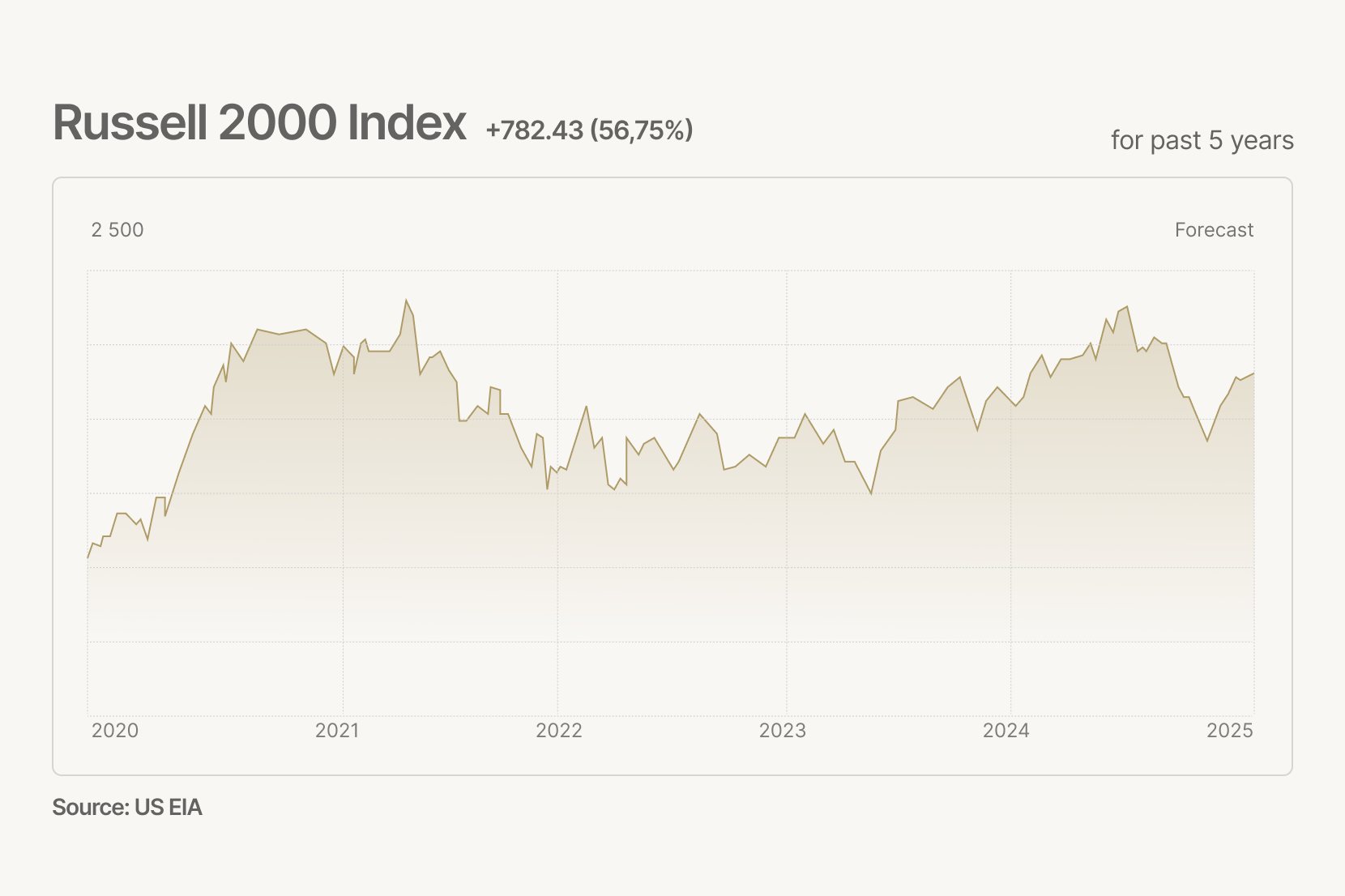Small-cap stocks outpaced their large-cap counterparts last week in a notable shift that highlights investor appetite for value amid economic uncertainties and market volatility. The Russell 2000 Index , which represents U.S. small-cap equities, rose 4.2% , significantly outperforming the broader S&P 500’s 1.5% gain during the same period. This rotation reflects a deeper recalibration among investors who are re-evaluating risks and seeking growth opportunities outside the mega-cap technology and consumer giants that have dominated the market in recent years.
Why Are Small-Caps Rallying Now?
Several factors contribute to the recent momentum in small-cap stocks:
- Domestic Exposure: Small-cap firms tend to derive the majority of their revenues from the U.S. market, insulating them somewhat from ongoing geopolitical tensions, currencyvolatility, and supply chain disruptions affecting multinational companies.
- Value vs. Growth Rebalancing: After several years of outsized gains for growth stocks, particularly in technology, investors are seeking undervalued segments of the market. Small caps often trade at lower valuations, making them attractive candidates for multiple expansion if earnings prove resilient.
- Inflation and Interest Rates: With inflation showing signs of moderation and the Federal Reserve signaling a potential pause in interest rate hikes, sectors sensitive to borrowing costs—where many small caps operate—are receiving renewed investor attention.
Angela Meyers, senior portfolio manager at Crestwood Capital, explains:
"Investors are rotating into small caps because they offer a compelling mix of value and growth. Many of these companies are well-positioned to capitalize on domestic economic trends without the geopolitical risks that weigh on large multinationals."
Valuation Metrics and Market Positioning
The forward price-to-earnings (P/E) ratio for the Russell 2000 stands at approximately 16.8x, compared to 19.4x for the S&P 500. This discount signals potential for further gains if small caps deliver solid earnings growth in coming quarters. Moreover, small caps’ price-to-book (P/B) ratios are near historic lows relative to large caps, suggesting market underappreciation of their asset bases and growth prospects.
Sector Contributions and Top Performers
The recent rally has been driven by diverse sectors, with technology, healthcare, and consumer discretionary leading the charge.
- Technology: Small-cap tech companies specializing in artificial intelligence, cybersecurity, and enterprise software have benefited from increased investment and adoption across industries. The surge in demand for AI-powered solutions has especially buoyed firms with innovative product offerings.
- Healthcare: Biotech and specialty pharmaceutical companies continue to attract investor interest, fueled by promising drug pipelines, clinical trial data, and regulatory approvals. Companies working on gene therapies and personalized medicine are standout performers.
- Consumer Discretionary: Specialty retailers and sustainable product companies have seen growing consumer demand, reflecting broader trends towards ethical consumption and eco-consciousness.
Notable performers include:
- NanoGen Solutions (NGS): This biotech firm soared 15% after announcing positive Phase 2 trial results for its breakthrough gene therapy targeting rare diseases.
- GreenPath Technologies (GPT): An environmental tech company focused on renewable infrastructure, which gained 12% following new contract awards and partnerships.
- Retail Innovators Inc. (RII): A sustainable goods retailer, up 10%, driven by strong e-commerce sales and expanded product lines targeting younger demographics.
Investor Sentiment and Risk Appetite
Small-cap outperformance is often interpreted as a signal of improving risk appetite among investors. The past few months have seen heightened volatility driven by inflation data, Federal Reserve communications, and geopolitical events. Amid this backdrop, investors appear willing to tilt portfolios toward riskier, higher-return segments. At the same time, fixed income markets have stabilized after the Fed’s recent indication of a pause in rate hikes, encouraging rotation into equities. The yield on the 10-year U.S. Treasury settled near 3.45% , down from highs above 4.0% earlier in the year, supporting equity valuations. However, volatility persists. The VIX index , a gauge of market fear, remains elevated relative to historical norms, signaling that investors are still sensitive to economic surprises and policy shifts.
Challenges Facing Small-Caps
Despite the optimism, small caps face several headwinds:
- Credit Conditions: Smaller companies are more reliant on bank lending and capital markets. Any tightening in credit availability or rising borrowing costs could constrain growth.
- Inflationary Pressures: While headline inflation has moderated, input costs—especially labor and raw materials—remain high for many small businesses, pressuring margins.
- Global Uncertainty: Although less exposed internationally, small-cap companies are not immune to supply chain disruptions, regulatory changes, or trade tensions that could impact inputs or sales.
- Earnings Volatility: Smaller firms generally have less diversified revenue streams, making them more vulnerable to economic slowdowns or sector-specific challenges.
Looking Ahead
Analysts expect small-cap equities to maintain their momentum if the U.S. economy continues to show resilience. The combination of attractive valuations, robust domestic demand, and innovation-driven growth supports a constructive outlook.
Potential catalysts include:
- Strong consumer spending , particularly in discretionary and tech-related sectors.
- Continued M&A activity , as larger firms seek to acquire innovative small companies to expand their product offerings.
- Favorable regulatory developments that support entrepreneurship and capital formation.
Portfolio managers recommend investors remain selective, focusing on companies with strong balance sheets, proven profitability, and market leadership within niche sectors.
Meyers concludes:
"Small-caps offer a compelling opportunity, but they come with higher risk. Investors should balance exposure with diversification and focus on quality fundamentals."






